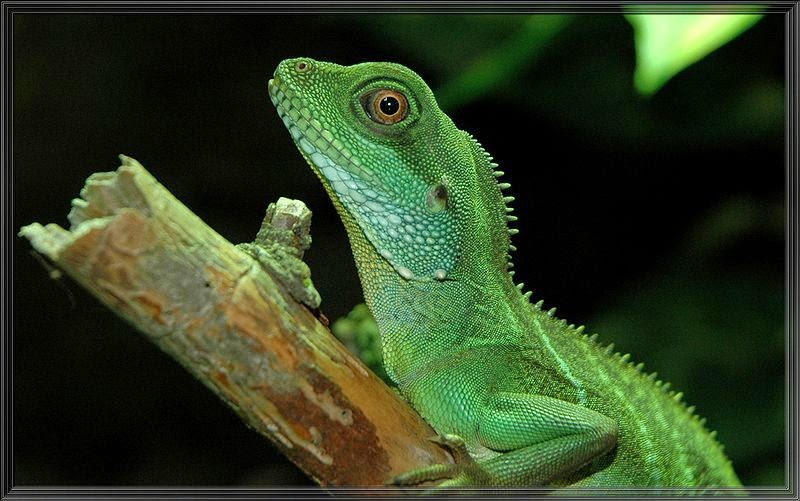Chinese Water Dragon Facts
Chinese Water Dragon Facts
Chinese Water Dragon, Australian Water Dragon, Asian water dragon, Thai water dragon, and green water dragon.1. As the name suggests, the Chinese water dragon’s habitat spans throughout parts of Asia, including Thailand, China, Vietnam and India. They favor habitat nearby to freshwater streams, lakes, and rivers. They live in habitats that are heavily forested around these water areas, such as rain forests and swamps, and spend most of their time in the trees along the bodies of water. Water dragons live in areas of high humidity, and temperatures of 80-100°F.
2. According to one source, the average life expectancy of most species of wild lizards is five to ten years, if they survive to adulthood.
3. Water dragons are variable in color from dark to light green. The coloration is partly temperature dependent; when the lizard is cooler, the markings will be darker, but when the lizard is warmer, the markings will be lighter.
4. The tail on water dragons has alternating green and brown stripes, and is long and thin but very strong and used for balance and defense. The lizard’s tail takes up over half of the body length and is long and thin.
5. The skin is dry and loose to the touch, with sandpaper-like bumps on the dorsal side of the body.
6. The green markings on the lizard help it to camouflage in the green, forested habitat it lives in. Water dragons use their long tail, which is strong and whip-like, to fend off any predators.
7. The water dragon uses its strong front claws to scale trees and branches in the forest. Water dragons can run bipedal, on its rear two legs, but do not use this method of moving often.
8. The tongue is long and sticky, which lets them capture and hold their main prey.
9. Water dragons are arboreal (tree dwelling) creatures, yet are also semi-aquatic and can spend a considerable amount of time on the ground and in the water.
10. Water dragons are long, slim bodied lizards with tails that are usually longer than the lizard’s body itself. A healthy dragon is bright green in color with bluish patches on the cheeks. The toes are long and the eyes are a bright orange-yellow color.
11. Water Dragons have a light sensitive “third eye” on the top of their heads, visible as a shiny spot about the size of a pin head. Known as the parietal eye, it controls hormone production and helps the animal regulate the amount of time it basks in the sun. They are extremely strong swimmers and can remain underwater for up to half an hour. Water dragons can also run on their hind legs!
12. When stressed or angry, water dragons may puff up their throats, wave their arms, head bob, whip their tails or lick each other!
13. Water dragons have a bad habit of banging their faces against the glass of their enclosure if the enclosure is too small. They can easily rub their faces raw and break their jaws trying to get out.
14. Water Dragons are omnivorous; which means they eat both meat and vegetables.
15. Unlike snakes, lizards shed their skin in patches, not all in one piece.
16. Water dragons are active during the day, described as diurnal.
17. While water dragons live in loose groups of a male and several females, the males and females may show aggression to each other in the form of arm waving, puffing of the throat, head bobbing and chasing.
18. When nervous or frightened water dragons take refuge in the water. They are strong swimmers and if necessary, can remain submerged for long periods of time, up to 25 minutes. If detected, they also may resort to flight, taking refuge inside one of its retreats, which typically are nearby.
19. Like most animals, the lizard’s main line of defense is to avoid detection, either by hiding or through camouflage. Water dragons are oviparous, in which the eggs are released by the female and development of the offspring occurs outside the maternal body.
20. While mating, the male bites the female's crest at the back of her neck to hold her in place. The female lays 6 to 15 eggs in a clutch which hatch after 60 to 75 days. Young ones are almost 6 inches in length at birth and have to fend for themselves.



These lizard species look like dragons, here is the list
ReplyDeletehttps://curbearth.com/lizards-that-look-like-dragons/